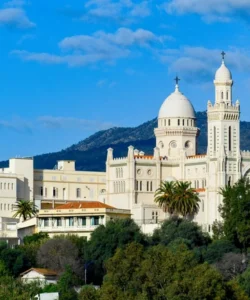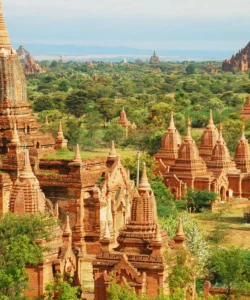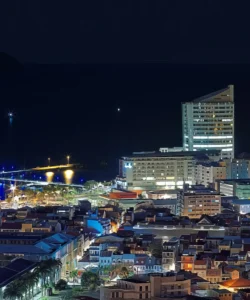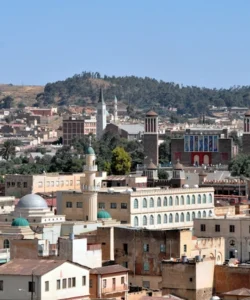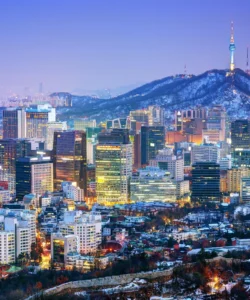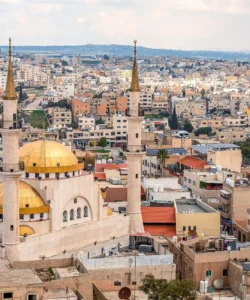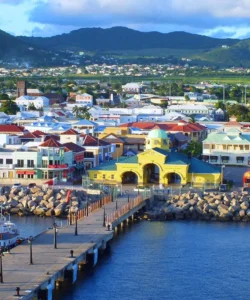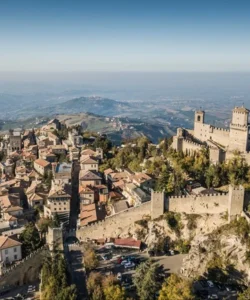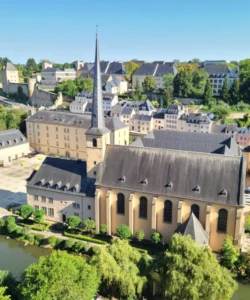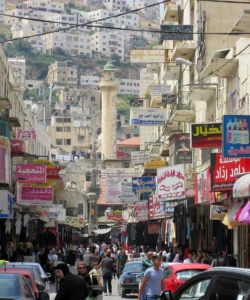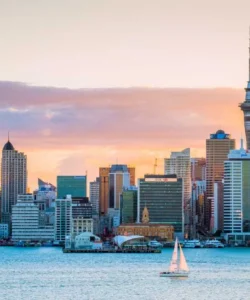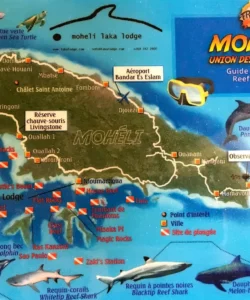France, officially the French Republic, is a transcontinental country spanning Western Europe and several overseas regions and territories. It is the largest country by area in the European Union and is celebrated for its rich history, diverse landscapes, and profound cultural influence.
![]()
Area and Population:
France (including its overseas regions) covers a combined area of 632,702 km² (244,288 sq mi). As of January 1, 2025, the estimated total population of France is over 68.6 million.
Capital:
The capital city of France is Paris.
Major Cities:
Beyond Paris, other major cities include Marseille, Lyon, Toulouse, Nice, Nantes, Montpellier, Strasbourg, Bordeaux, and Lille.
Language:
The official language of France is French.
Currency:
As a founding member of the European Union and a key member of the Eurozone, France uses the Euro (€) as its official currency.
Religion:
France is a secular republic, meaning there is a strict separation of church and state. While the government does not collect data on religious affiliation, surveys indicate that Roman Catholicism is the largest religion, though a significant portion of the population is not actively religious. Islam is the second largest religion, and there are also Protestant, Jewish, Buddhist, and Orthodox Christian communities. A substantial percentage of the population identifies as atheist or agnostic.
Attractions and Wonders:
- Iconic Landmarks in Paris:
- Eiffel Tower: The world-famous “Iron Lady,” a global cultural icon of France.
- Louvre Museum: Home to thousands of works of art, including the Mona Lisa.
- Notre-Dame Cathedral: A masterpiece of Gothic architecture (under restoration since the 2019 fire, with a planned reopening in December 2024).
- Arc de Triomphe: A majestic monument commemorating French victories, with a panoramic terrace.
- Musée d’Orsay: Housed in a former Beaux-Arts railway station, featuring Impressionist and Post-Impressionist masterpieces.
- Sacre-Cœur Basilica, Montmartre: A stunning basilica offering panoramic views of the city.
- Champs-Élysées: One of the world’s most famous avenues.
- Beyond Paris:
- Palace of Versailles: A magnificent royal château known for its Hall of Mirrors and vast gardens.
- Mont Saint-Michel, Normandy: A stunning medieval abbey and village perched on a tidal island, a UNESCO World Heritage site.
- Loire Valley Châteaux: A region dotted with magnificent castles, including Chenonceau, Chambord, and Villandry.
- French Riviera (Côte d’Azur): Famous for its glamorous cities like Nice, Cannes, and Saint-Tropez, stunning coastlines, and Mediterranean charm.
- Provence: Known for its lavender fields, ancient Roman ruins (like the Pont du Gard and arenas in Arles and Nîmes), charming villages, and vibrant markets.
- Bordeaux and its Vineyards: A world capital of wine, offering vineyard tours and wine tasting.
- Carcassonne: A remarkably preserved fortified medieval city in the south.
- D-Day Landing Beaches, Normandy: Historic sites commemorating the Allied invasion of World War II.
- Strasbourg’s Grande Île: A UNESCO World Heritage site with its stunning Gothic cathedral and charming half-timbered houses.
- Lyon: Recognized as a gastronomic capital, with a beautiful old town and Roman ruins.
Architecture:
French architecture is exceptionally diverse, reflecting centuries of artistic and historical movements.
- Gothic (12th-16th Century): Characterized by pointed arches, flying buttresses, ribbed vaults, and large stained-glass windows, aiming for verticality and grandeur (e.g., Notre-Dame Cathedral, Chartres Cathedral).
- Renaissance (15th-17th Century): Influenced by Italian styles, emphasizing symmetry, proportion, and classical elements (e.g., Loire Valley Châteaux like Chambord).
- Baroque (17th Century): Grand and dramatic, with elaborate ornamentation, often associated with King Louis XIV (e.g., Palace of Versailles).
- Classical French (17th-18th Century): A more restrained and elegant style than Baroque, focusing on balance and order (e.g., many Parisian hôtels particuliers).
- Neoclassical (18th-19th Century): A return to classical simplicity and monumental scale (e.g., The Panthéon, Arc de Triomphe).
- Haussmannian (19th Century): Characteristic of Parisian urban planning, with grand boulevards, uniform stone facades, and ornamental wrought-iron balconies.
- Art Nouveau and Art Deco (Early 20th Century): Found in Paris and other cities, with Art Nouveau featuring organic, flowing forms and Art Deco emphasizing geometric shapes and luxurious materials.
- Modern and Contemporary: Significant contemporary structures exist, particularly in major cities, reflecting innovation and often sustainable design.
Roads:
France has one of the most extensive and well-maintained road networks in Europe.
- Autoroutes (Motorways): A comprehensive system of high-speed, often tolled, multi-lane highways (marked with blue signs and “A” numbers) connecting major cities and regions. These are generally the fastest way to travel long distances.
- Routes Nationales (National Roads): A network of strategic trunk roads (marked with “N” numbers) that complement the motorways, often free to use, but can be single or dual carriageway.
- Routes Départementales (Departmental Roads): A vast network of secondary roads (marked with “D” numbers) managed by local departments, varying in quality from narrow country lanes to excellent alternatives to motorways.
- Tolls (Péages): Most autoroutes in France are toll roads. Payment can be made by cash, credit card, or electronic tag (e.g., a “Liber-t” badge).
The road signage is generally clear, and the network is efficient for both domestic and international travel.
Hotels:
France offers an incredibly diverse range of accommodation options, from world-class luxury to charming local stays.
- Luxury and Palace Hotels: Paris and the French Riviera are home to some of the world’s most prestigious hotels, known for their grandeur, impeccable service, and Michelin-starred dining (e.g., Hôtel Ritz, Le Meurice, Hotel du Cap-Eden-Roc).
- Boutique Hotels: Numerous stylish and unique boutique hotels can be found in city centers and popular tourist destinations, offering personalized experiences.
- Châteaux and Manor Houses: Opportunities to stay in historic castles and elegant country estates, particularly in regions like the Loire Valley and Provence.
- Chain Hotels: Major international and French hotel chains (e.g., Accor brands like Novotel, Ibis, Mercure) are widely available.
- Chambres d’Hôtes (Bed & Breakfasts): A popular choice for a more local and intimate experience, often in charming rural settings or historic townhouses.
- Gîtes Ruraux (Holiday Cottages): Self-catering rural accommodations, ideal for families or longer stays.
- Campsites: France has an extensive network of campsites, ranging from basic pitches to luxury glamping.
Restaurants and Cuisine:
French cuisine is renowned worldwide for its sophistication, artistry, and emphasis on fresh, high-quality ingredients. It’s listed as a UNESCO Intangible Cultural Heritage.
- Classic Dishes:
- Boeuf Bourguignon: A rich beef stew braised in red wine with mushrooms, onions, and bacon.
- Coq au Vin: Chicken braised with wine, mushrooms, lardons (bacon), and garlic.
- Escargots de Bourgogne: Snails prepared with garlic-parsley butter.
- Soupe à l’Oignon Gratinée: Classic French onion soup topped with toasted bread and melted cheese.
- Crêpes: Thin pancakes, sweet (e.g., with Nutella, sugar, jam) or savory (galettes, often with ham, cheese, egg).
- Quiche Lorraine: A savory tart with bacon, eggs, and cream.
- Confit de Canard: Duck leg slow-cooked in its own fat until tender and crispy.
- Ratatouille: A vegetable stew from Provence, typically with tomatoes, zucchini, eggplant, bell peppers, and herbs.
- Foie Gras: A delicacy of fattened duck or goose liver.
- Baked Goods & Desserts:
- Croissants and Pain au Chocolat: Essential breakfast pastries.
- Baguette: The iconic crusty French bread.
- Macarons: Delicate, colorful meringue-based cookies with various fillings.
- Crème Brûlée: A rich custard dessert topped with a layer of hardened caramelized sugar.
- Tarte Tatin: An upside-down apple tart.
- Cheese: France is famous for its vast array of cheeses (over 1,000 varieties), categorized by region, milk type, and aging process. Popular ones include Brie, Camembert, Roquefort, Comté, and Chèvre.
- Drinks:
- Wine: France is one of the world’s leading wine producers, with renowned regions like Bordeaux, Burgundy, Champagne, Rhône Valley, Loire Valley, and Alsace.
- Champagne: The famous sparkling wine from the Champagne region.
- Cognac & Armagnac: Brandy produced in specific regions.
- Cider: Particularly popular in Normandy and Brittany.
- Pastis: An anise-flavored aperitif popular in the south.
Dining in France ranges from Michelin-starred gourmet experiences and traditional brasseries to charming local bistros, bustling markets, and convenient boulangeries (bakeries) and patisseries (pastry shops).

